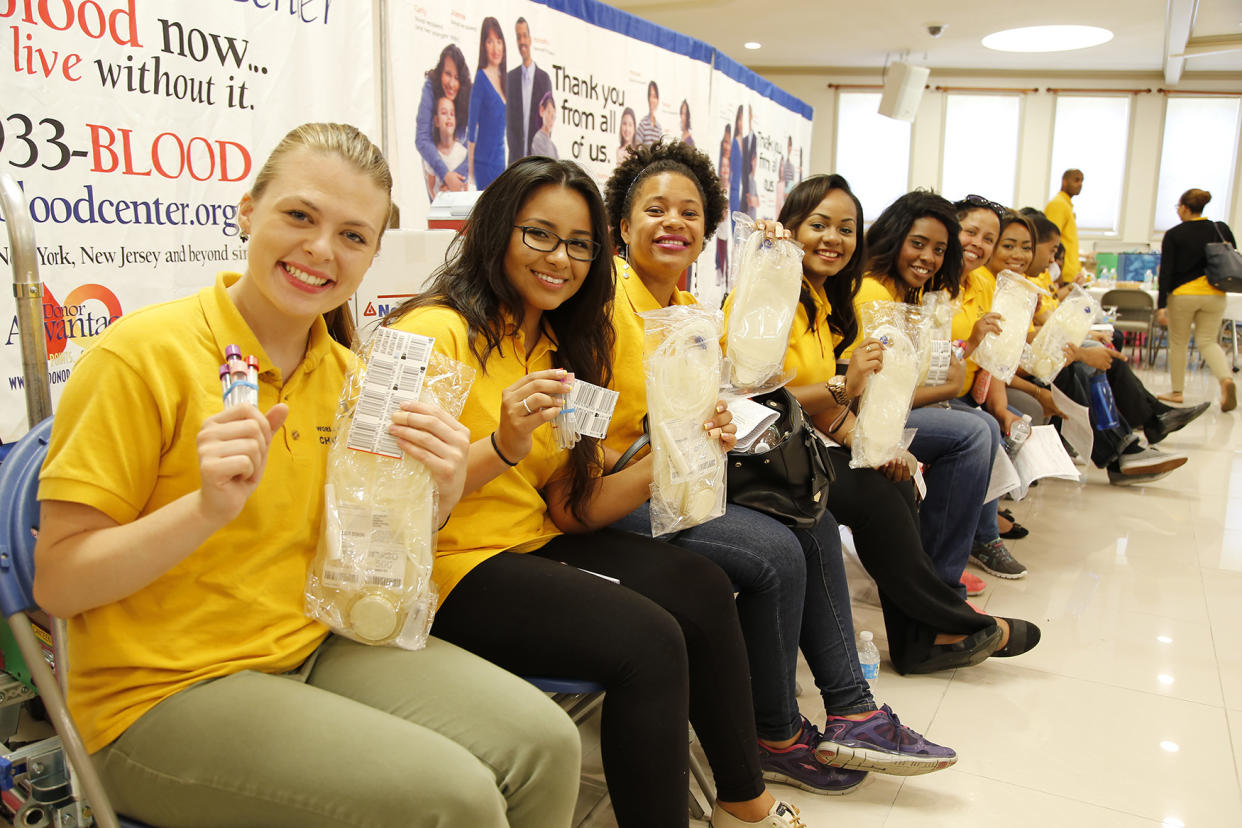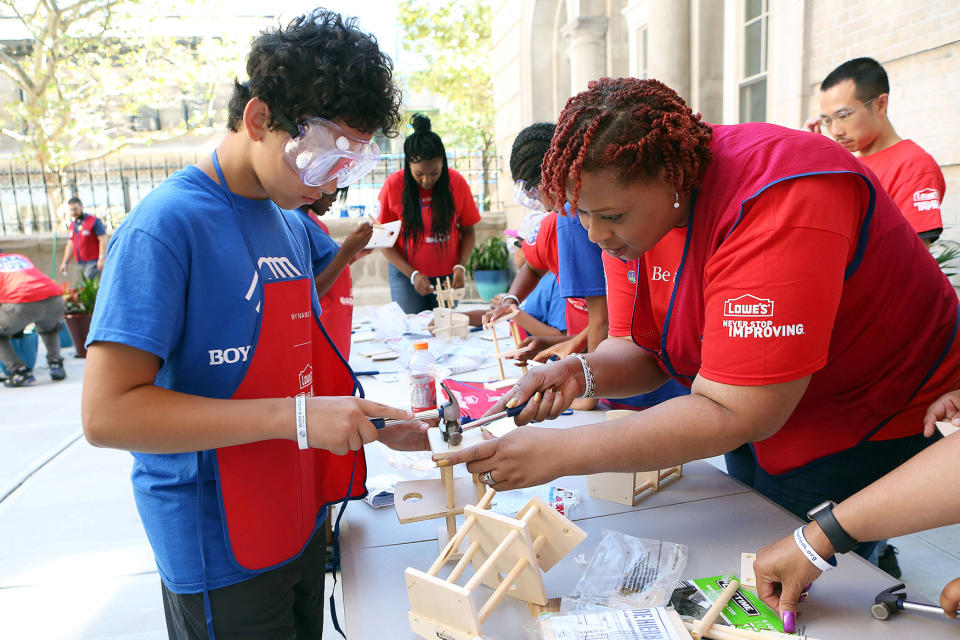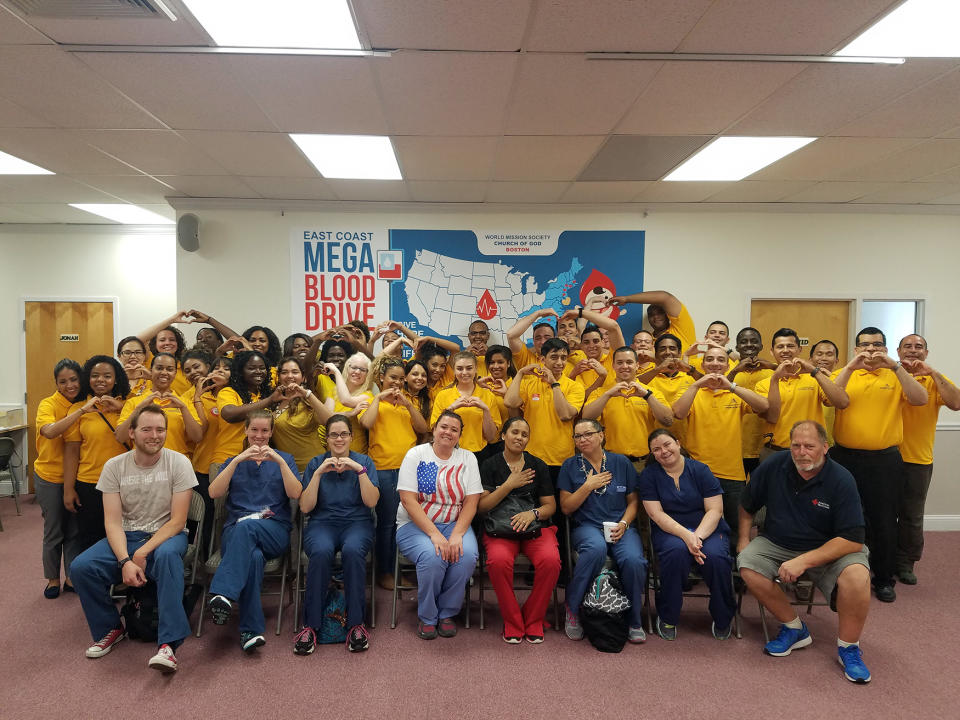The 9/11 children: How the attacks shaped a generation

Layla Zaidane was 13 years old on Sept. 11, 2001. She was in eighth grade and at school in New York’s suburban Westchester County, a short train ride from the World Trade Center.
She remembers seeing kids get pulled out of class and rumors swirling. It wasn’t clear what was happening until her English teacher, a British woman with a notoriously blunt demeanor, gathered students and said, as Zaidane recalls, “Something terrible has happened. Two planes have flown into the twin towers, and a lot of people are injured or dead, and this is very bad.”
She remembers worrying about her father, who owned a car service and regularly drove into Manhattan and the airports nearby. New York’s cellphone network was overloaded, making it impossible to get calls through. Zaidane didn’t know her father was safe until he made it home.
She remembers feeling grateful that her orthodontist appointment in Manhattan had been the day before, and that she wasn’t in the city that day.
Amid the shock and confusion that followed the attacks, Zaidane also remembers simply trying to understand the attacks, what they meant for her, her family, the country and the future.
Later that same year, Zaidane’s family visited Washington D.C., and she fell in love with Georgetown University, where she would eventually study international relations.
“I was really interested in how relationships between countries are working and not working, and how can we fix them,” Zaidane, now 28, told Yahoo News. “How are we accepting cultural differences and facilitating exchange of ideas without putting down other people’s cultures and way of life?”
Fifteen years after the worst attack on U.S. soil, Zaidane has continued trying to answer those questions in her role as managing director of Generation Progress, a Washington, D.C.-based nonprofit research and student advocacy organization.
Looking back, “I feel like [9/11] probably had something to do with me ending up doing what I’m doing now,” she said.
Zaidane is not alone. She is part of the generation, later dubbed “millennials,” whose journey into adulthood was inescapably shaped by the attacks of 9/11 and the climate that followed.
A generation awoken
There were myriad predictions and theories after 9/11 on the possible long-term effects the attacks might have on this new generation of Americans. Yahoo News looked back at news coverage from the first year after 9/11 and studied some of the extensive research that’s been done on millennials over the past 15 years to compare the forecasts to the reality.
“As the nation endured the worst terrorist attacks in its history, young people confronted a reality unlike any their parents or grandparents have faced, even with the bombing of Pearl Harbor in 1941,” read a story on the front page of the Lakeland, Fla., Ledger, on Sunday, Sept. 23, 2001. “As the world watched symbols of the country’s financial and military might burn and crumble, teen-agers and twenty-somethings grieved not only for the assault on freedom and the loss of thousands of lives, but for their generation, which could be on the front lines of a new kind of war.”
Several interviews with teachers, parents, psychologists and kids themselves from across the country published within the first year or so after the attacks suggested that America’s youth weren’t just shaken by the events of Sept. 11, 2001, they’d been awoken.
“It changed me in so many ways I cannot say,” 8-year-old Sylvia Moore told the Shreveport Times in a story published on Sept. 11, 2002. She said before Sept. 11, she didn’t know where Afghanistan was, but after, “I can close my eyes and imagine them fighting the war.”

The compulsion to help
Many of the initial fears and anxieties sparked by the attack were soon replaced by an overwhelming desire to help. For some who were old enough, that meant enlisting in the military. But for most, it took the form of blood drives, bake sales, car washes, and other types of fundraisers for the families of victims and first responders in New York.
Newspaper reports from the time documented those efforts.
“Everybody is just hungry to reach out and help. … They want to show their compassion, their love, their caring,” Sandra Ahola, principal of the Pomfret Community School in northeastern Connecticut, told the New York Times in an article printed Sept. 23, 2001.
“Shiloh middle-schoolers are collecting cash and writing letters to students in New York expressing their condolences,” read an article in the Atlanta Journal Constitution on Sept. 18, 2001. “I think everyone wants to do whatever they can,” Larry Stone, principal of Riverside Elementary in Suwanee, Ga., told the paper.
“For a good number of young people, Sept. 11 has rendered our plans irrelevant and in some cases just plain selfish. It has taken our dreams of professional success and cast them beneath the harsh glare of our own mortality,” Kevin Doughten wrote in an editorial for the Newark, N.J., Star-Ledger on Sept. 10, 2002.
Doughten, then 23, added, “This is not entirely a bad thing.” He wrote, “While confusion is the dominant emotion in the wake of the attacks, given time and reflection, I believe that this confusion will eventually give way to a stronger sense of purpose and direction. We will be more likely to pursue goals that have greater personal meaning and perhaps more reluctant to sacrifice those goals for the sake of financial success.”
Indeed, in the years following the attacks, the altruism that arose from the ashes of Ground Zero didn’t taper but rather sparked a dramatic increase in volunteerism among young people nationwide.
According to a December 2006 report by the federal Corporation for National and Community Service on volunteer growth in America since 1974, in 2005 volunteerism had reached an all-time high, with teenagers largely leading the charge. Not only had the percentage of 16- to 19-year-old volunteers doubled since 1986, but by 2005 it had surpassed even the national volunteer rate. (PDF)
A separate CNCS report from the same year found that between 2002 and 2005, volunteerism among college students had increased by about 20 percent. The percentage of college volunteers nationwide had jumped from 27.1 percent to 30.2 percent since September 2001.
“The growth in college volunteering has been generated primarily by youth who attended high school or were first-year college students during the terrorist attacks of 9/11,” wrote the report’s authors.
The piqued interest in politics and current events that many parents and teachers observed in the wake of the attacks also proved lasting. And as more millennials became of voting age, it evolved into increased political engagement.
According to the U.S. Census Bureau, 20.1 million 18- to 29-year-olds voted in the 2004 presidential election — 4.3 million more than had participated four years earlier. By the next election, that number had increased by another 2.2 million, with between 22 and 24 million voters under the age of 30 turning out to the polls in 2008.
As of this year, with the youngest among them having finally reached 18, millennials now make up 31 percent of the electorate and rival the nation’s 69.7 million baby boomers as the most potentially influential group of eligible voters.
However, unlike with prior wartime generations, growing up in the shadow of the conflicts in Iraq and Afghanistan did not lead to a dramatic uptick in millennials enlisting in the armed forces — in general they are more likely to express support for the troops than join them.
According to an in-depth Pew Research Center report on the millennial generation from 2010, “Today, 2% of the males in this generation of 18- to 29-year-olds are military veterans.”
Comparatively, 6 percent of Generation Xers, 13 percent of baby boomers, 24 percent of members of the Silent Generation — which refers to those born between the mid-1930s and the early 1940s, including many who fought in the Korean War — had completed military service during the same stage of their lives.

The inclusive generation
“The way that people look at Muslims wherever they may go, sometimes in the mall, sometimes in the workplace, there is always the feeling that you are a stranger, you’re standing out in the community,” Imam Nizam Raouf Zaman of the Muslim Center of Middlesex County in Piscataway in New Jersey is quoted as saying in a 2003 story on Sept. 11 in the Bridgewater, N.J., Courier News. “People are looking at you in a strange way.”
In the era now known as pre-9/11, the FBI’s Uniform Crime Reports program recorded approximately 20 to 30 anti-Muslim hate crimes in the U.S. each year. In 2001, after 2,996 people were killed in acts of terror eventually linked to a group of Islamic extremists in Afghanistan, the program counted close to 500 biased attacks against Muslims.
Muslims and Arab Americans of all ages reported being the subject of threats, harassment, and even violence in the weeks and months that followed the attacks.
Zaidane, whose parents immigrated to the U.S. from Morocco, said she was aware that some people harbored negative attitudes toward Muslim and Arab Americans, but she never witnessed anything like that within the walls of her private French-American school — even though there were situations where such sentiment might be been triggered.
For example, one of her fellow eighth-graders was named Osama.
“I just remember thinking … ‘things are gonna be bad for this kid,’” Zaidane recalls. Yet, as far as she knows, “Nobody did anything.”
“It was kind of beautiful to see the maturity of people to not torment this young boy because he shares a name with a horrible person,” she said. “I remember thinking, honestly for some people this takes some real effort to be kind when it would be pretty easy to make a hurtful joke.”
Zaidane believes, “It speaks to how our instinct in a time of crisis was to open our arms to each other. And today 15, years later, we’re still demonstrating those same values, in the types of policies we support, the ways we see to make change.”
Research on the inclination of the millennial generation to connect with the world beyond their personal experience supports Zaidane’s observations.
According to a 2011 Center for American Progress report on the 10th anniversary of the attacks, not only did the overall number of American students studying abroad increase immediately in the first school year following 9/11, but between 2002 and 2006, enrollment in study-abroad programs to Arabic countries specifically jumped 127 percent.
Driven by both curiosity and federal incentive programs created after 9/11, CAR reported that more millennials now study Arabic, Hindi, Punjabi, and a variety of other foreign languages than students in previous generations. As of 2011, religious studies had increased by 22 percent, CAR reported.
Zaidane said the attacks prompted her to take more of an interest in her own religion. Where previously she’d attended Sunday school begrudgingly, after 9/11, she said, she started to really pay attention.
“I think it did awaken some curiosity in me about who I was and what the religion was,” Zaidane recalls. Understanding what it meant to be Muslim, she felt, was important not just for her but for her non-Muslim friends.
“I think knowing somebody who was Muslim was also helpful in that time for them,” she said. “Even if I didn’t necessarily know every little thing, they knew me as a person who likes to go to the movies and play soccer and hang out with friends, not someone who is hijacking planes and flying into buildings.”
In 2002, the Pew Research Center reported that, while most Americans generally felt that they knew very little about Islam, young people tended to have more knowledge about the religion.
For example, 56 percent of respondents under the age of 30 knew that “Allah” is the Muslim word for God, but only 35 percent of those 65 and over correctly identified the term. The same report found that a majority of people under 30 said they viewed Muslim Americans, Muslims, and Islam favorably across the board. Older Americans, on the other hand, expressed favorable opinions of Muslim Americans but were more skeptical about Muslims and Islam in general.
This offers at least a partial explanation for what Nashville-based child psychologist Dave Verhaagen considers the most unexpected outcome of the Sept. 11 attacks for millennials.
“In the years right after 9/11, surveys of kids, younger people showed that they were extremely worried and anxious,” Verhaagen, who has studied millennial development for more than a decade, told Yahoo News. “If someone said you’re going to call me in 2016 and ask about millennial fears, I would’ve said they’d be more fearful of violence and terrorism than other generations.”
To Verhaagen’s surprise, he said, “it’s actually the opposite.”
More recent surveys show that, while millennials as a whole exhibit high rates of stress and anxiety, they are significantly less worried about terrorism than their elders are.
“Anxiety for them is really anchored now around economic issues, economic inequalities, social justice issues,” he said, echoing Zaidane.

And while he expected the trauma of 9/11 to haunt the young people who lived through it for years to come, Verhaagen said it makes sense that the concerns keeping millennials up at night are “anchored in reality.” Social injustice and financial instability, for example, are things young people are forced to deal with in their day-to-day lives.
On the other hand, “terrorism in the United States is a rare phenomenon,” Verhaagen said, noting that the average American has just about the same chance of being fatally crushed by a piece of furniture as of being killed by terrorists.
“Fear of terrorism is more fear of the other, fear of the unknown,” he continued. “Fear of those who are different doing something scary to us.”
Those kinds of fears, “I think are going to affect older generations because they have less comfort with people who are different with them,” Verhaagen said. “Young people are very comfortable with people who are different from them, they’re used to being friends with people from different places, with different backgrounds or sexual orientations.”
With 44.2 percent belonging to racial or ethnic minorities, millennials are more diverse than any previous generation in the United States.
It’s also because of millennial diversity, Zaidane argues, that “it’s very important for us to make sure that all our civil liberties are protected.”
According to a Pew poll released ahead of the 10th anniversary of the attacks, “the young are roughly twice as likely as seniors to be bothered by their belief that Muslims are singled out for increased government surveillance and monitoring. Younger Americans also are less supportive of extra airport checks on people who appear to be of Middle Eastern descent.”
“For us, patriotism really means doubling down on the values this country was founded on and making sure we’re extending that to our classmates, people we play sports with, people we see on TV even,” said Zaidane.
Millennials “get a [bad] rap sometimes for being apathetic or disengaged,” she added. “But we’re a very inclusive generation.”
_____
Related slideshows:
Slideshow: 9/11: Then and now – 15 years later >>>
Slideshow: Remembering 9/11 >>>
Slideshow: Tribute in Light >>>
Slideshow: World reactions to the 9/11 attacks – A look back >>>
Slideshow: How the 9/11 attacks were reported on front pages around the world >>>


